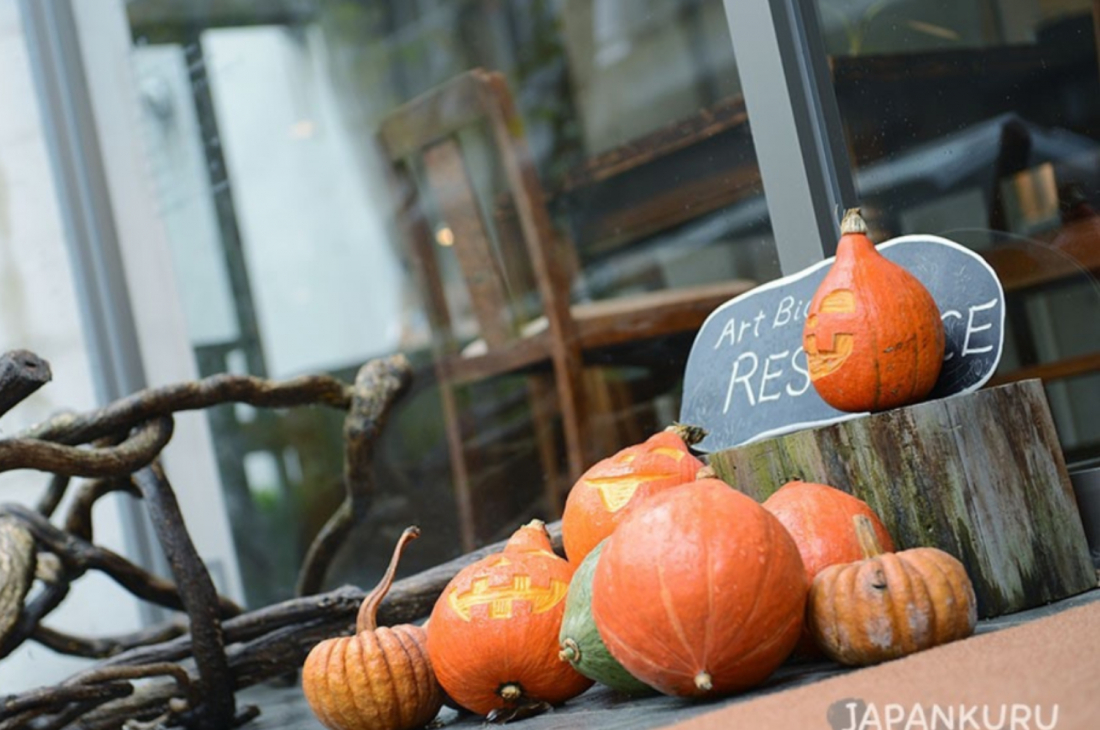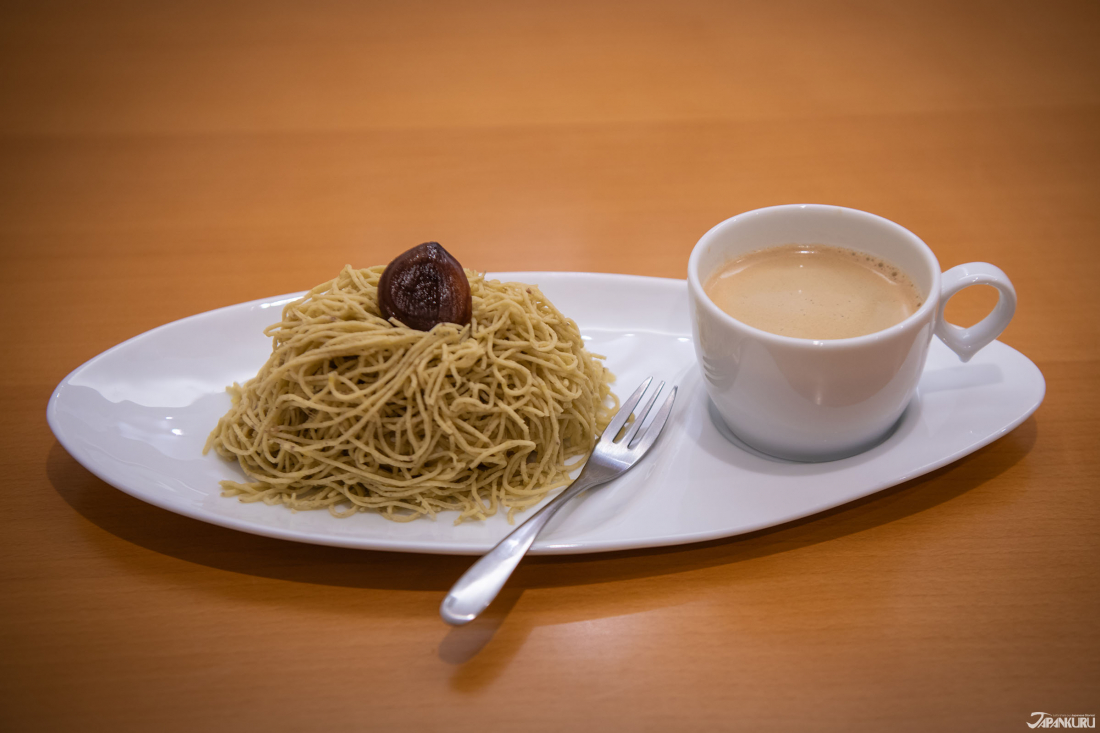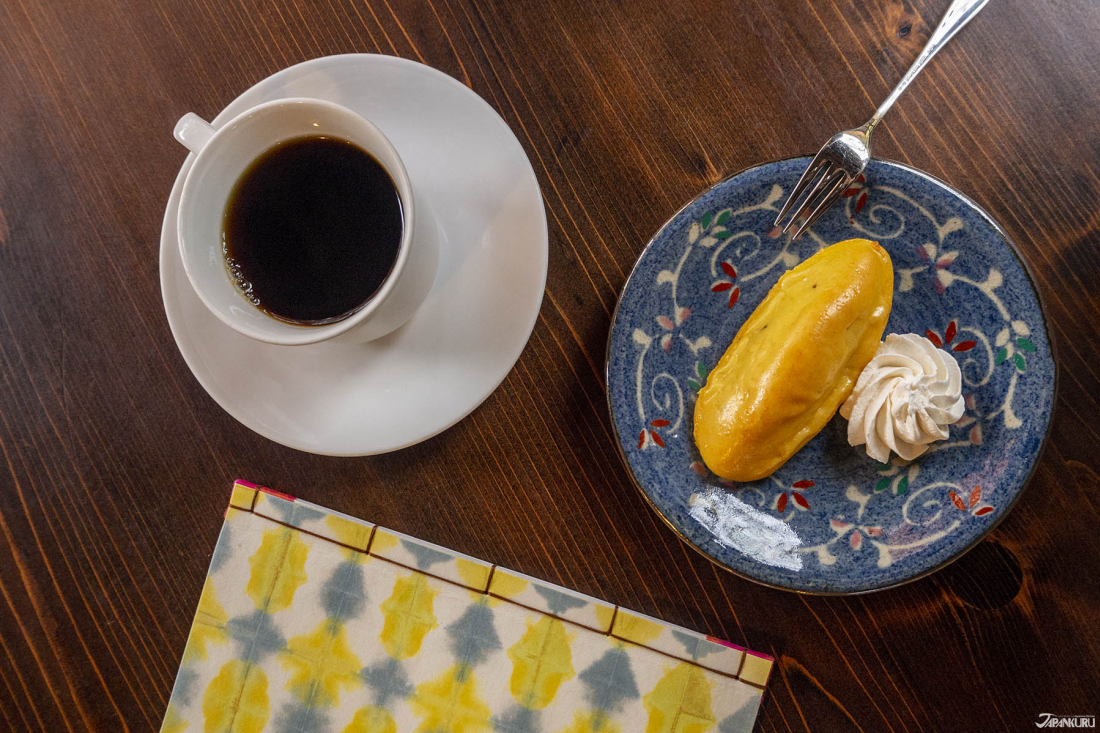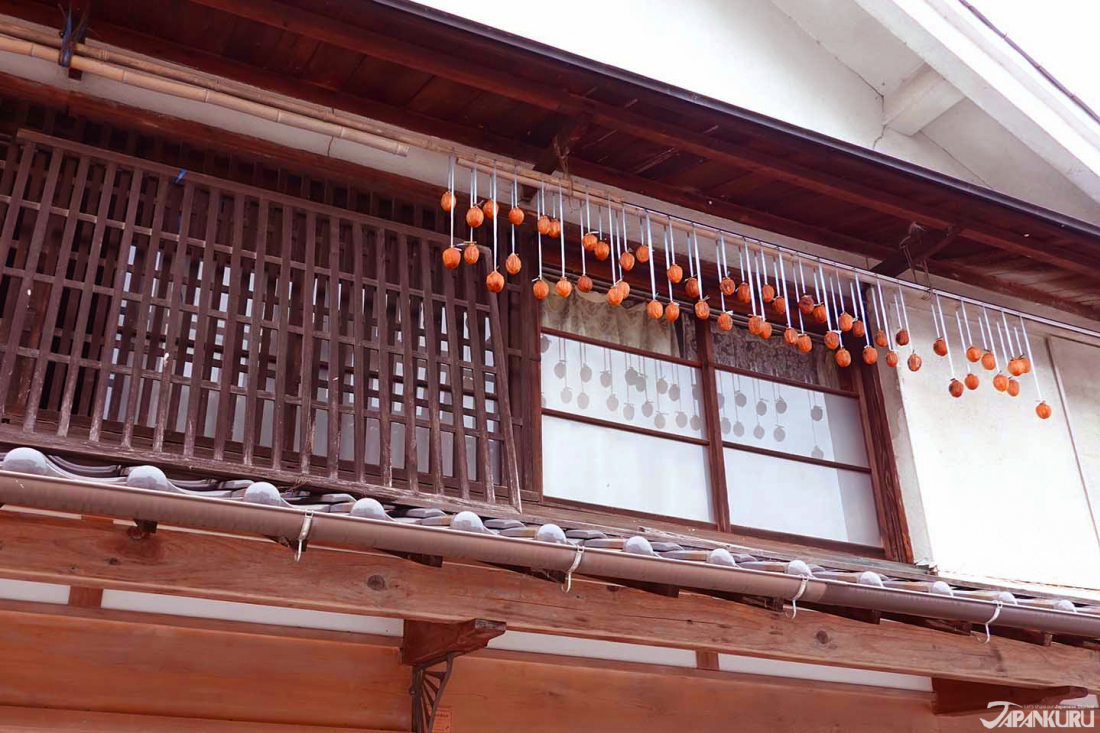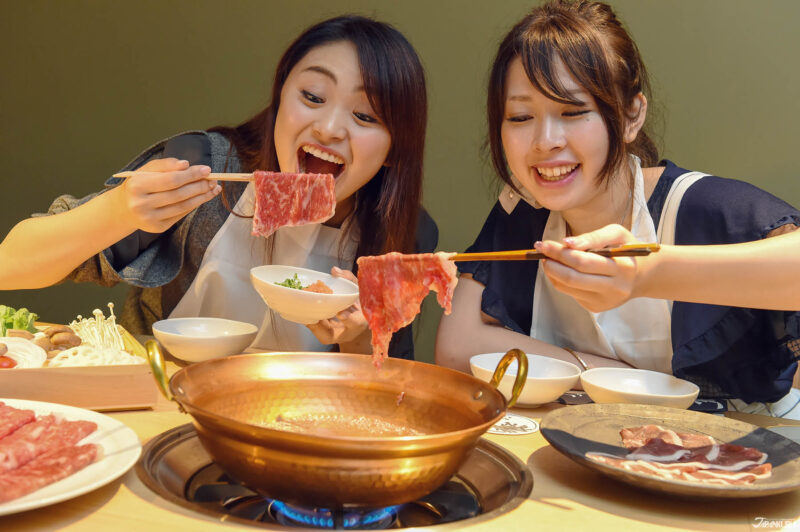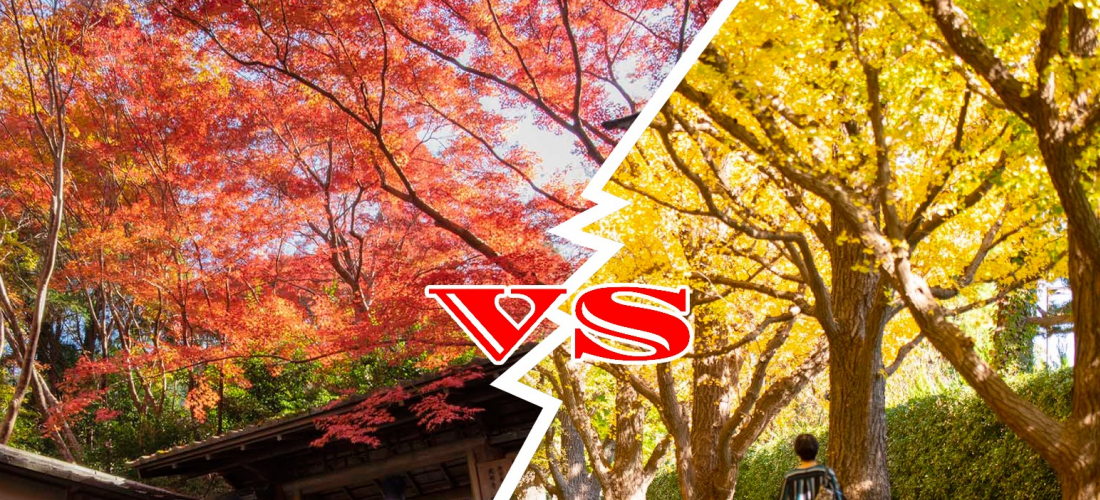CONTENTS
Ingredients might be available year-round, but seasonal foods and culinary traditions are still a way of life in Japan.
Fall Flavors in Japan
If you've spent much time in Japan, you might have noticed the importance of the "shiki" (四季/the four seasons) in Japanese culture, and all the traditions that come and go with the changing of the seasons. Enjoying the beauty of spring cherry blossoms and the color of the fall leaves are fun ways to join in on the seasonal fun, but food plays a big role in celebrating the beauty of every part of the year, so seasonal ingredients and recipes are a great way for food lovers to dive deep into this delicious part of Japanese culture! Seasonal ingredients can be found all over the place, on the menus of both upscale dining establishments and family restaurants, added as flavor powder on potato chips or a filling in cheap chocolates, and of course in the traditional Japanese recipes cooked at home and offered in shops. Here are a few of the flavors you can expect to see each fall!
Pumpkin
Pumpkins are a symbol of fall all over the world, from the brilliantly orange jack-o-lanterns decorating American doorsteps on Halloween, to the mottled green gourds that chefs across Japan turn into spectacular soups, snacks, and desserts as well. Chunks of the sweet Japanese pumpkin, with its green skin and orange flesh, are often stewed in savory broths, or sliced thin and deep fried under a coat of simple batter to create addictively crunchy pumpkin tempura, often dipped in ponzu sauce. Pumpkin is often used as a sweet flavor in Japan, too, adding its distinctive taste to cakes, cookies, traditional Japanese wagashi, and just about anything else. Don't buy any Japanese pumpkin desserts expecting pumpkin spice, though! These sweets really taste like pumpkin, without any notes of cinnamon or nutmeg.
▷ Enjoy it at home! Early fall is still quite warm in Japan, making it the perfect time of year to enjoy these delightfully orange pumpkin somen noodles from Grape (a part of a pretty multicolored noodle set). Somen are generally served chilled during the warmer months of the year, so these pumpkin ones are perfect for days when fall is in the air, but the weather isn't quite cooperating yet. After the meal, Halloween motifs have become popular in Japan in recent years, leading to cute products like this Halloween tea set with its kawaii jack-o-lantern tea bag – filled of course with real pumpkin hojicha (roasted green tea). Sweet tooths can even pick up this Halloween sugar cube pack with a pumpkin sugar cube to add to the tea!
Sanma (Pacific Saury)
Referred to variously as Pacific saury, mackerel pike, or sanma, this long, thin, and silvery little fish is a delicacy throughout east Asia, although Japan has been known to take the lion's share of each year's catch. Even the least cooking-proficient Japanese speaker can tell you that sanma is a fall fish, however, thanks to the name. In Japanese, sanma can be written as "秋刀魚," using the kanji for "autumn knife fish." The "knife" refers to the silvery blade-like form of the fish, which would fit right in on the shelves of one of Japan's popular cooking knife stores. The "autumn" refers to the season when sanma are caught, brought to market in huge numbers, then grilled simply and served on a long plate alongside a bowl of rice, miso soup, and Japanese-style pickles – the epitome of minimalist Japanese cuisine!
▷ Enjoy it at home! Try finding sanma at a local market (or a similar fish that can be grilled and eaten whole), and serving it up on an elegant traditionally rectangular plate like this one from Maruhiro to recreate the experience found in Japanese homes throughout the fall. You can even pick up matching bowls for rice and soup! And if these knife-like fish have you thinking you might need a fancy new Japanese knife, check out the selection at Jikko.
Chestnut
Those of us who grew up in Western English-speaking countries often associate chestnuts with Christmas, making them something of a winter treat, if you eat them at all. But in Japan, chesnuts and chestnut-based sweets start to show up as soon as the summer heat starts to cool, and those tasty treats stick around throughout the coldest months of the year. Chestnuts are actually part of Japan's traditional New Year's food traditions, making it into the "osechi" bento boxes eaten during the first days of the new year. Usually, the chestnuts found in osechi come in the form of "kuri-kinton" (栗金団), a dish where sweetened chestnuts are embedded in a layer of sugary sweet potato paste. These days, however, the Japanese autumn often brings a rush of "Mont Blanc" pastries: a mound of noodly chestnut paste and whipped cream originally from Italy. There are plenty of Frenchified "marron" sweets around to boot.
▷ Enjoy it at home! For a traditional taste of kuri-kinton, don't miss the offerings available during the early fall from Irodori, which come in box sets that quickly sell out each year. Or try some of the chestnut sweets from Nakamura Tokichi, which mix traditional Japanese flavors with a little European inspiration. Their kuri-kinton jellies and little financier cakes made with hojicha tea and whole chestnuts just scream fall!
Sweet Potato
Harvested starting in the late summer, and eaten throughout the colder months of the year, Japanese sweet potatoes are a bright yellow on the inside, a color set off by the thin layer of ruddy maroon skin covering the outside. In Japan, the most popular way of eating sweet potatoes is simply to roast them in their skins, and when the weather starts to turn, baked sweet potatoes are sold warm all over the place: at supermarkets, sometimes at convenience stores, and frequently from the back of food trucks where the potatoes are roasted in ovens full of pebbles, as they slowly drive through the streets like ice cream trucks blaring out the words "iiiishi-yaaaaki imoooo" (stoooone-rooooasted potatooooes!) on repeat.
Japan has a love for sweet potatoes with such high sugar content that the roast tuber basically starts to turn into candy inside and leaks sweet potato syrup, which justifies the lack of other flavors! But sweet potatoes are prepared in other ways as well, sometimes as savory dishes like tempura, sometimes as sugary sweet potato tarts and cakes, and sometimes as snacks like "daigaku-imo" (大学芋), where sweet potatoes are cooked in a light soy sauce glaze, and then dusted with black sesame seeds.
▷ Enjoy it at home! Japanese sweet potato dishes can mostly be replicated with the slightly different kinds of sweet potato found overseas. (There's no reason why you can't, for example, try making tempura with the orange sweet potatoes commonly found in North America!) But different sweet potato varieties tend to taste a little bit different, so you can always order yourself some Japanese-style "imo-kenpi" (芋けんぴ) sweet potato chips to find out just what you're missing out on! And if you fall in love with the lovely red skin and yellow flesh of the Japanese sweet potato, we recommend picking up your own sweet potato notebook, made accordion-style like a goshuincho!
Persimmon
Bright orange and rich in vitamins and fiber, persimmons seem ripe for exploitation as a trendy health food, but the fruit is no passing trend in Japan, where it's called "kaki" (柿). Japanese persimmons come in two main varieties – sweet and firm "fuyuu-gaki" that can be found early in the fall, and "hachiya-gaki," which will dry your mouth out. The unique astringency of hachiya-gaki persimmons means that they can't be eaten until later in the season, when they're so ripe that the astringent flavor morphs into a jammy sweetness, and the texture becomes soft and spoonable. But perhaps the true persimmon delicacy is "hoshi-gaki," which are hachiya-gaki persimmons that have been peeled, strung up outside to dry out, and gently massaged every day for at least a month. The resulting dried persimmons have a warm flavor and a chewy texture that Japanese people go crazy for, and if they weren't so hard to find outside of Japan, they'd probably be an international phenomenon.
▷ Enjoy it at home! Hoshigaki might be hard to find outside of Japan, but fortunately for anyone who is now dying to try this fruity delicacy from abroad, it's possible to export them! The Mitsukoshi-Isetan department store webshop offers some very high-end dried persimmons, along with a whole selection of dried persimmon wagashi sweets, like these hoshigaki stuffed with white bean jam and these traditional persimmon candies. There are even cosmetics made with persimmons, perfect for big fans of the fruit!
Eating Seasonally
With seasonal flavors showing up everywhere from the supermarket produce section to Starbucks limited-edition product releases, finding out what's in season and where to try it can be one of the many joys of visiting Japan. So next time you visit Japan, keep an eye out for seasonal delicacies, whether it be the fall flavors listed here or other specialties from other parts of the year – like summer watermelon, spring cherry blossom, or even winter mikan (mandarin orange)! There's nothing better than a meal that perfectly matches the time of year. And in the meantime, check out some of the ways that you can try a taste of Japan from the comfort of your own home. You might find some new fall favorites!
Details
NAME:Fall Foods
Looking for the latest trends and products coming out of Japan? We've got you covered!
COMMENT
FEATURED MEDIA
VIEW MORE 
A New Tokyo Animal Destination: Relax & Learn About the World’s Animals in Japan
#pr #japankuru #anitouch #anitouchtokyodome #capybara #capybaracafe #animalcafe #tokyotrip #japantrip #카피바라 #애니터치 #아이와가볼만한곳 #도쿄여행 #가족여행 #東京旅遊 #東京親子景點 #日本動物互動體驗 #水豚泡澡 #東京巨蛋城 #เที่ยวญี่ปุ่น2025 #ที่เที่ยวครอบครัว #สวนสัตว์ในร่ม #TokyoDomeCity #anitouchtokyodome

Shohei Ohtani Collab Developed Products & Other Japanese Drugstore Recommendations From Kowa
#pr #japankuru
#kowa #syncronkowa #japanshopping #preworkout #postworkout #tokyoshopping #japantrip #일본쇼핑 #일본이온음료 #오타니 #오타니쇼헤이 #코와 #興和 #日本必買 #日本旅遊 #運動補充能量 #運動飲品 #ช้อปปิ้งญี่ปุ่น #เครื่องดื่มออกกำลังกาย #นักกีฬา #ผลิตภัณฑ์ญี่ปุ่น #อาหารเสริมญี่ปุ่น

도쿄 근교 당일치기 여행 추천! 작은 에도라 불리는 ‘가와고에’
세이부 ‘가와고에 패스(디지털)’ 하나면 편리하게 이동 + 가성비까지 완벽하게! 필름카메라 감성 가득한 레트로 거리 길거리 먹방부터 귀여움 끝판왕 핫플&포토 스폿까지 총집합!
Looking for day trips from Tokyo? Try Kawagoe, AKA Little Edo!
Use the SEIBU KAWAGOE PASS (Digital) for easy, affordable transportation!
Check out the historic streets of Kawagoe for some great street food and plenty of picturesque retro photo ops.
#pr #japankuru #도쿄근교여행 #가와고에 #가와고에패스 #세이부패스 #기모노체험 #가와고에여행 #도쿄여행코스 #도쿄근교당일치기 #세이부가와고에패스
#tokyotrip #kawagoe #tokyodaytrip #seibukawagoepass #kimono #japantrip

Hirakata Park, Osaka: Enjoy the Classic Japanese Theme Park Experience!
#pr #japankuru #hirakatapark #amusementpark #japantrip #osakatrip #familytrip #rollercoaster #retrôvibes #枚方公園 #大阪旅遊 #關西私房景點 #日本親子旅行 #日本遊樂園 #木造雲霄飛車 #히라카타파크 #สวนสนุกฮิราคาตะพาร์ค

🍵Love Matcha? Upgrade Your Matcha Experience With Tsujiri!
・160년 전통 일본 말차 브랜드 츠지리에서 말차 덕후들이 픽한 인기템만 골라봤어요
・抹茶控的天堂!甜點、餅乾、飲品一次滿足,連伴手禮都幫你列好清單了
・ส่องมัทฉะสุดฮิต พร้อมพาเที่ยวร้านดังในอุจิ เกียวโต
#pr #japankuru #matcha #matchalover #uji #kyoto #japantrip #ujimatcha #matchalatte #matchasweets #tsujiri #말차 #말차덕후 #츠지리 #교토여행 #말차라떼 #辻利抹茶 #抹茶控 #日本抹茶 #宇治 #宇治抹茶 #日本伴手禮 #抹茶拿鐵 #抹茶甜點 #มัทฉะ #ของฝากญี่ปุ่น #ชาเขียวญี่ปุ่น #ซึจิริ #เกียวโต

・What Is Nenaito? And How Does This Sleep Care Supplement Work?
・你的睡眠保健品——認識「睡眠茶氨酸錠」
・수면 케어 서플리먼트 ‘네나이토’란?
・ผลิตภัณฑ์เสริมอาหารดูแลการนอน “Nenaito(ネナイト)” คืออะไร?
#pr #japankuru #sleepcare #japanshopping #nenaito #sleepsupplement #asahi #睡眠茶氨酸錠 #睡眠保健 #朝日 #l茶胺酸 #日本藥妝 #日本必買 #일본쇼핑 #수면 #건강하자 #네나이토 #일본영양제 #อาหารเสริมญี่ปุ่น #ช้อปปิ้งญี่ปุ่น #ร้านขายยาญี่ปุ่น #ดูแลตัวเองก่อนนอน #อาซาฮิ

Japanese Drugstore Must-Buys! Essential Items from Hisamitsu® Pharmaceutical
#PR #japankuru #hisamitsu #salonpas #feitas #hisamitsupharmaceutical #japanshopping #tokyoshopping #traveltips #japanhaul #japantrip #japantravel

Whether you grew up with Dragon Ball or you just fell in love with Dragon Ball DAIMA, you'll like the newest JINS collab. Shop this limited-edition Dragon Ball accessory collection to find some of the best Dragon Ball merchandise in Japan!
>> Find out more at Japankuru.com! (link in bio)
#japankuru #dragonball #dragonballdaima #animecollab #japanshopping #jins #japaneseglasses #japantravel #animemerch #pr

This month, Japankuru teamed up with @official_korekoko to invite three influencers (originally from Thailand, China, and Taiwan) on a trip to Yokohama. Check out the article (in Chinese) on Japankuru.com for all of their travel tips and photography hints - and look forward to more cool collaborations coming soon!
【橫濱夜散策 x 教你怎麼拍出網美照 📸✨】
每次來日本玩,是不是都會先找旅日網紅的推薦清單?
這次,我們邀請擁有日本豐富旅遊經驗的🇹🇭泰國、🇨🇳中國、🇹🇼台灣網紅,帶你走進夜晚的橫濱!從玩樂路線到拍照技巧,教你怎麼拍出最美的夜景照。那些熟悉的景點,換個視角說不定會有新發現~快跟他們一起出發吧!
#japankuru #橫濱紅磚倉庫 #汽車道 #中華街 #yokohama #japankuru #橫濱紅磚倉庫 #汽車道 #中華街 #yokohama #yokohamaredbrickwarehouse #yokohamachinatown

If you’re a fan of Vivienne Westwood's Japanese designs, and you’re looking forward to shopping in Harajuku this summer, we’ve got important news for you. Vivienne Westwood RED LABEL Laforet Harajuku is now closed for renovations - but the grand reopening is scheduled for July!
>> Find out more at Japankuru.com! (link in bio)
#japankuru #viviennewestwood #harajuku #omotesando #viviennewestwoodredlabel #viviennewestwoodjapan #비비안웨스트우드 #오모테산도 #하라주쿠 #日本購物 #薇薇安魏斯伍德 #日本時尚 #原宿 #表參道 #japantrip #japanshopping #pr

Ready to see TeamLab in Kyoto!? At TeamLab Biovortex Kyoto, the collective is taking their acclaimed immersive art and bringing it to Japan's ancient capital. We can't wait to see it for ourselves this autumn!
>> Find out more at Japankuru.com! (link in bio)
#japankuru #teamlab #teamlabbiovortex #kyoto #kyototrip #japantravel #artnews
Photos courtesy of teamLab, Exhibition view of teamLab Biovortex Kyoto, 2025, Kyoto ® teamLab, courtesy Pace Gallery

Japanese Makeup Shopping • A Trip to Kamakura & Enoshima With Canmake’s Cool-Toned Summer Makeup
#pr #canmake #enoshima #enoden #에노시마 #캔메이크 #japanesemakeup #japanesecosmetics

⚔️The Robot Restaurant is gone, but the Samurai Restaurant is here to take its place. Check it out, and don't forget your coupon!
🍣신주쿠의 명소 로봇 레스토랑이 사무라이 레스토랑으로 부활! 절찬 쿠폰 발급중
💃18歲以上才能入場的歌舞秀,和你想的不一樣!拿好優惠券去看看~
#tokyo #shinjuku #samurairestaurant #robotrestaurant #tokyotrip #도쿄여행 #신주쿠 #사무라이레스토랑 #이색체험 #할인이벤트 #歌舞伎町 #東京景點 #武士餐廳 #日本表演 #日本文化體驗 #japankuru #japantrip #japantravel #japanlovers #japan_of_insta

Japanese appliance & electronics shopping with our KOJIMA x BicCamera coupon!
用JAPANKURU的KOJIMA x BicCamera優惠券買這些正好❤️
코지마 x 빅 카메라 쿠폰으로 일본 가전 제품 쇼핑하기
#pr #japankuru #japanshopping #kojima #biccamera #japaneseskincare #yaman #dji #osmopocket3 #skincaredevice #日本購物 #美容儀 #相機 #雅萌 #日本家電 #일본여행 #면세 #여행꿀팁 #일본쇼핑리스트 #쿠폰 #일본쇼핑 #일본브랜드 #할인 #코지마 #빅카메라 #japankurucoupon



